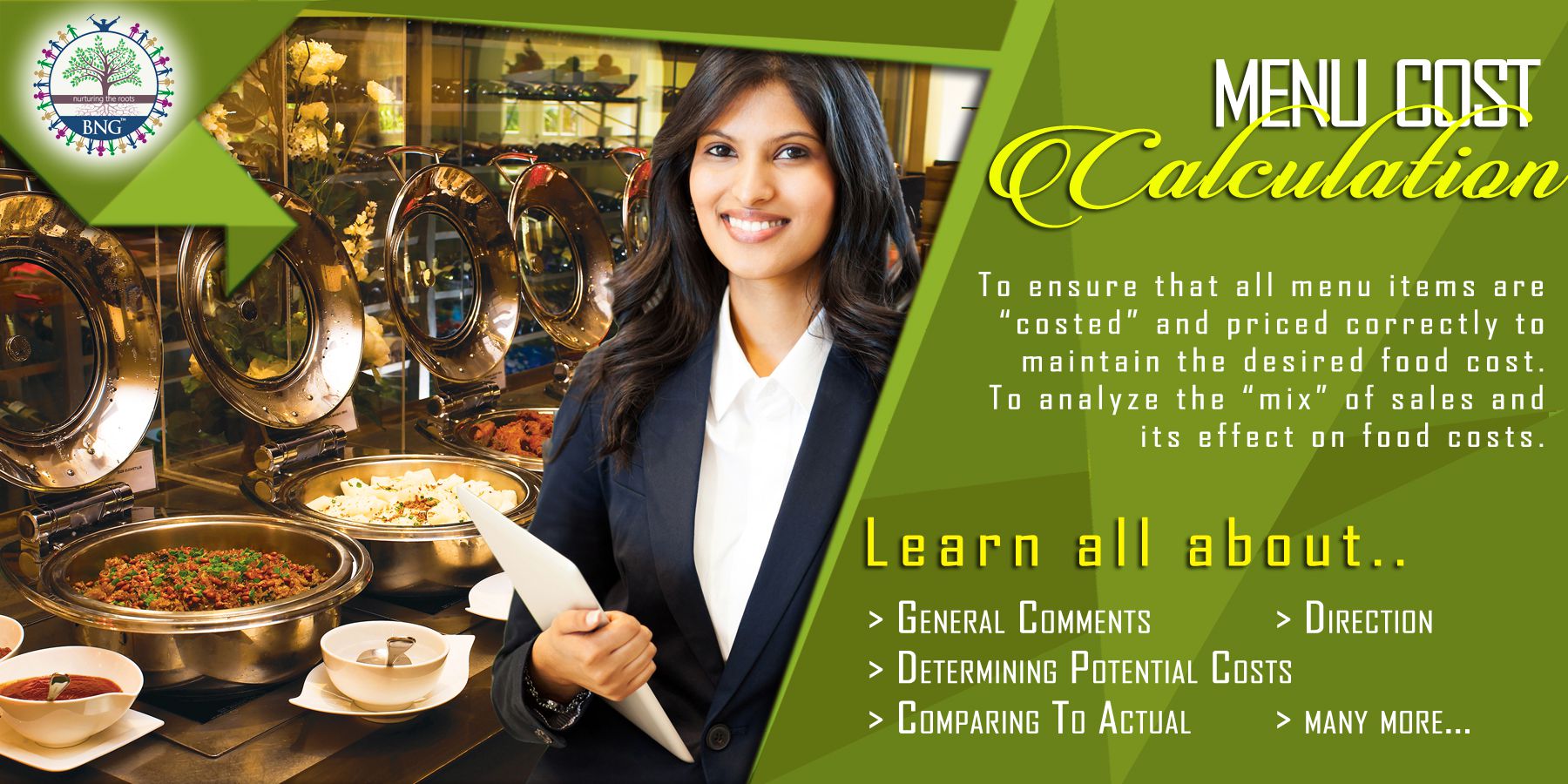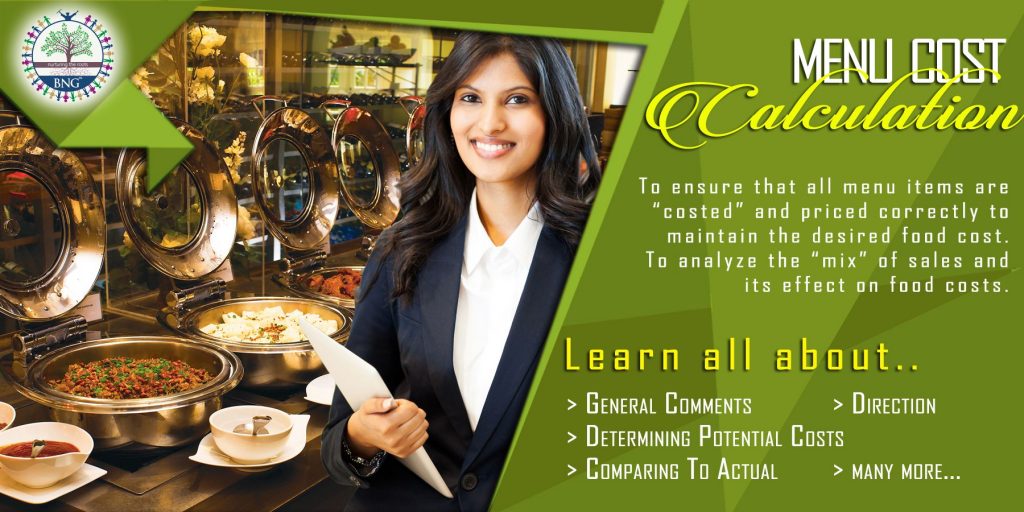Hotels and restaurants determine and evaluate menu cost for all menu items on a regular basis to ensure that all menu items are “costed” and priced correctly to maintain the desired food cost. To analyze the “mix” of sales and its effect on food costs. Learn all about General Comments, Direction, Determining Potential Costs , Comparing To Actual.
RESPONSIBILITY: Director of Food and Beverage, Controller, Executive Chef and Food and Beverage Controller.
GENERAL COMMENTS/DIRECTION for Menu Cost
1. If at all possible, it is recommended that the property utilize the P.C. Menu Costing Program available through local vendors. This program will save a great deal of time, as it eliminates the repetitive calculations involved in completing the potential. The program requires only that the menu abstracts, costs and selling prices be entered. All other tasks are automated.
2. A total menu cost potential must be completed prior to the implementation of any new menu.
3. The potential should be completed once per period, utilizing the Point-of- Sale abstract totals to recalculate the sales mix.
4. All costs should be updated quarterly or with the implementation of any new or revised menu.
DETERMINING POTENTIAL COSTS AND COMPARING TO ACTUAL
5. Determine the current food cost for each item on the menu by costing current use records.
6. Obtain the menu count/abstract for the most recent complete accounting period.
7. Multiply the number of each item sold times the cost to determine the total cost of product for the quantity of each menu item sold.
8. Multiply the number of each item sold times the selling price to determine the total sales value for the quantity of each menu item sold.
9. Add all of the cost totals calculated in step 3 above to obtain the potential total cost of sales for all menu items sold during the period.
10. Add all of the sales value totals calculated in step 4 above to obtain the potential total sales for all menu items sold during the period.
11. Divide the potential cost from step 6 by the potential sales from step 7 to obtain the potential food cost percentage for the menu.
12. To obtain an overall potential food cost percentage for the Food department, total potential costs for each menu (outlet) should be added together, total potential sales values for each menu should be added together, and the resulting cost should be divided by the total sales value from all menus.
13. This Food Department potential cost should be combined with the Catering potential cost to determine the consolidated potential food cost for the hotel. (See F&B-SOP-16, “Catering Potential Food Cost Calculation”.)

14. If there is more than a plus or minus 2% variance between the potential food cost and the actual food cost, there are a number of areas that should be examined:
a. Improper purchasing/receiving procedures/techniques.
b. Inadequate food storage/issue controls.
c. Inadequate food production controls.
d. Inventory errors (physical and/or extension).
e. Theft/spoilage/waste of food product.
f. Incorrect credits for employee meals/at-cost functions / inter- departmental transfers.
g. Recipe cards not used/not followed. h. Use records not used/not followed.
i. Inadequate point-of-sale controls.
By no means should your areas of concern be limited to those listed above if there are other causes/problems that need to be examined.
15. All current and past potentials must be maintained on file by the Director of Food and Beverage and Controller. Past potentials should include at least one full menu revision cycle.





